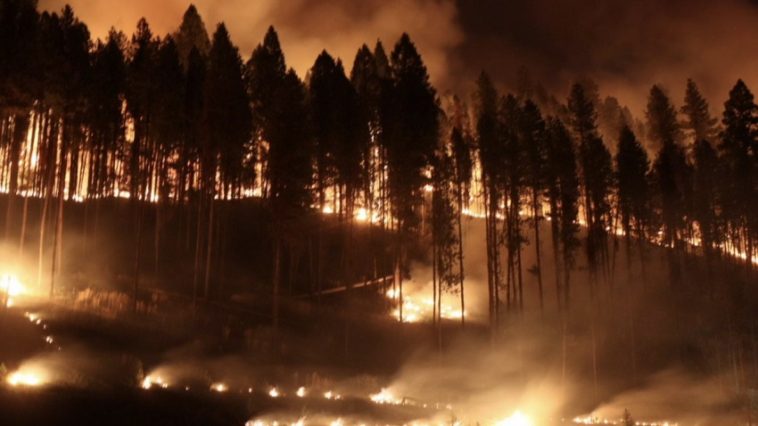Missoula, MT – Montana’s 2024 wildfire season will be remembered for its intensity, claiming nearly 388,000 acres of land and leaving lasting scars on both the landscape and the people of the state. The season began quietly, with early moisture in May providing a brief sense of hope. However, as the summer unfolded, dry conditions and lightning strikes turned the state into a battleground against devastating fires.
The Horse Gulch Fire, which started in early July, was one of the season’s most significant. Located northeast of Helena, the fire consumed nearly 15,000 acres and claimed the life of pilot Juliana Turchetti. Turchetti tragically lost her life while gathering water to help fight the blaze, a stark reminder of the risks faced by those who battle the flames.
By mid-July, southeastern Montana was ablaze as dry lightning ignited multiple fires, including the Deadman, McGhee, Prairie, and Four Mile Fires. Together, these fires ravaged nearly 48,000 acres, further intensifying the already severe fire season.
Western Montana also saw its share of destruction. The Miller Peak Fire ignited just seven miles from Missoula, burning 2,700 acres before being contained. The Johnson Fire, sparked by lightning on July 25, burned over 8,000 acres in the Sula area. Soon after, the Railroad-Daly Fires broke out along the Skalkaho Highway southeast of Hamilton, spreading over 12,800 acres.
Perhaps the most notable fire of the season was the Remington Fire, which began in Sheridan County, Wyoming, in late August. The fire quickly crossed the state line into Montana, devastating the Powder River, Big Horn, and Rosebud counties, as well as impacting the Northern Cheyenne Reservation and the Custer National Forest. The fire ultimately scorched more than 196,000 acres before it was contained in mid-September.
Although the 2024 wildfire season wasn’t the worst in Montana’s history, it still left a profound impact on the state. The fires resulted in heavy smoke, scorched landscapes, and widespread destruction. The total acreage burned was higher than that of both 2022 and 2023 combined, highlighting the severity of the season. The fires were likely fueled by the persistent drought conditions that plagued much of Montana throughout the year.
According to data from the National Oceanic and Atmospheric Administration (NOAA), by mid-December 2024, almost the entire state was experiencing some level of drought, with “extreme” drought conditions affecting areas near Missoula and southeastern Montana. This was the fifth consecutive year that Montana endured drought conditions, exacerbating the wildfire risks.
Despite the hardships of the 2024 fire season, there is some optimism for the future. The NOAA predicts that by the first quarter of 2025, conditions will improve across much of Montana, providing hope for the coming year and relief to the areas still recovering from the devastating fires.
As Montana looks ahead, the 2024 wildfire season stands as a reminder of the state’s vulnerability to extreme weather conditions and the relentless force of nature. The scars of the fires may fade over time, but the memory of this intense season will be etched in the minds of those who lived through it.



